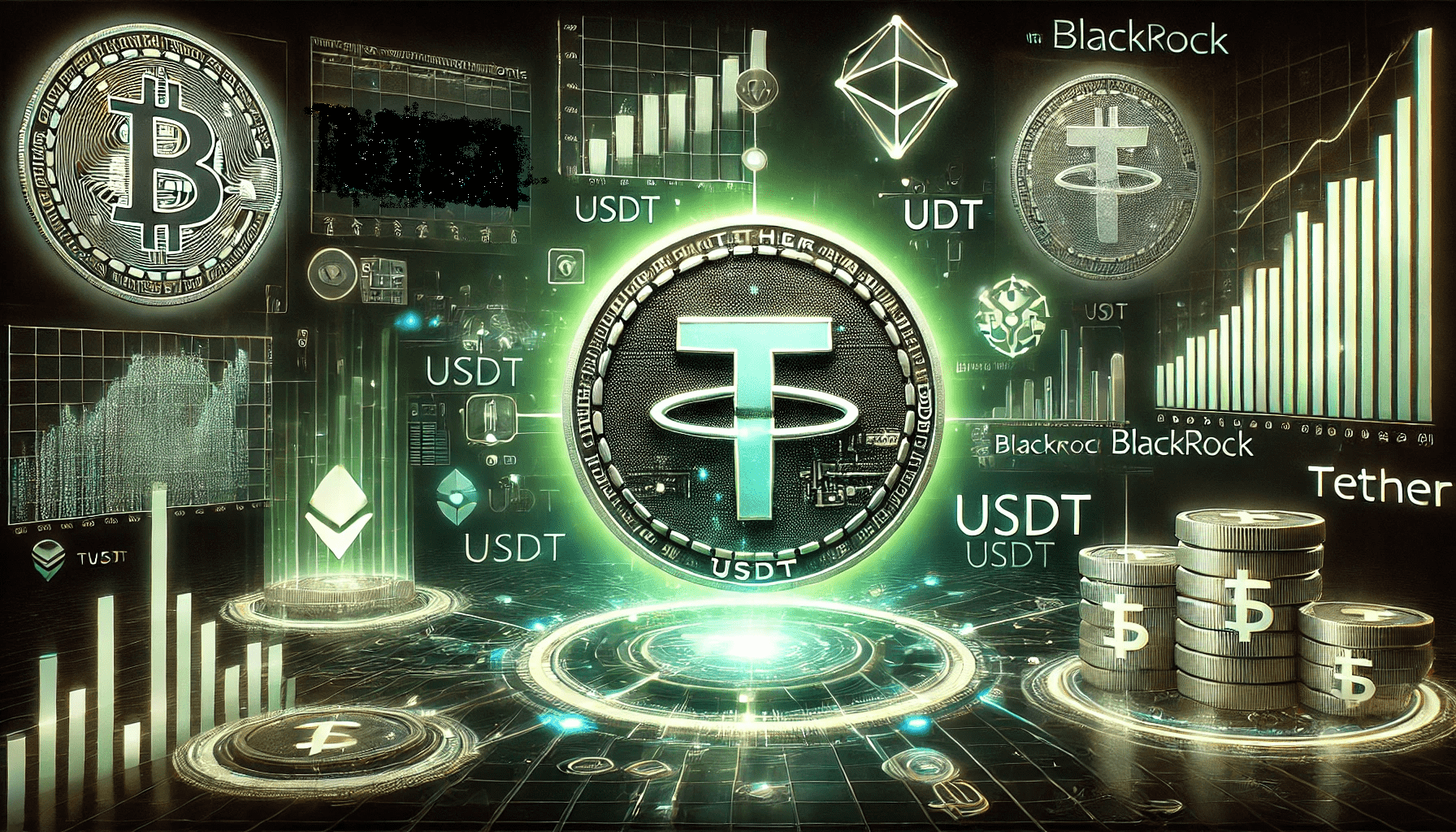
Bored Apes and Broken Tests: How Courts Let NFT Promoters Off Easy
When Judge Fernando Olguin dismissed the class action against Yuga Labs and its celebrity promoters on September 30, 2025, he wielded an analytical framework forged in 1946 – a time when “digital” meant fingers and “token” meant a subway fare. The SEC v. W.J. Howey Co. test, born from litigation over Florida orange groves, now confronts cartoon apes on blockchains.
Had NFTs been deemed securities – investments of money in common enterprises with profits expected from others’ efforts – the mandatory disclosure requirements, fraud protections, and regulatory oversight that securities laws provide might have shielded investors from what characterized this market: promotional schemes, celebrity endorsements without proper disclaimers, and artificial price manipulation.
Judge Olguin’s dismissal effectively determined these protections don’t apply. Investors who lost billions are left with little recourse beyond the argument that they should have known better than to trust promoters marketing cartoon apes as pathways to wealth.
Understanding the Bored Ape Phenomenon
To grasp what’s at stake, one must first understand what Bored Ape Yacht Club actually is. In April 2021, Yuga Labs launched a collection of 10,000 unique digital images – each depicting a cartoon ape with a distinctively bored expression and varying traits like different fur colors, clothing, and accessories. These weren’t merely pictures one could download and use as a desktop wallpaper. They were non-fungible tokens, or NFTs – unique digital certificates of ownership recorded on the Ethereum blockchain.
Unlike cryptocurrencies such as Bitcoin, where each unit is identical and interchangeable (fungible), each Bored Ape NFT is unique by design. The blockchain serves as an immutable ledger, permanently recording who owns which specific ape. When someone purchases Bored Ape #7091, for instance, they acquire not the copyright to the image – which often remains with the creator – but rather a verifiable claim to ownership of that particular digital token, along with whatever rights the creator chooses to grant.
The Bored Ape project distinguished itself through an unusual feature: Yuga Labs claimed to grant NFT owners commercial rights to their specific apes, allowing them to create merchandise, derivative works, or even incorporate their apes into entertainment projects. The company also marketed ownership as “membership” in an exclusive digital club, promising access to special events, online spaces, and future benefits tied to an evolving “ecosystem” of related products.
This ecosystem expanded rapidly. Yuga introduced the Mutant Ape Yacht Club and Bored Ape Kennel Club – spinoff NFT collections for existing holders. It launched ApeCoin, a cryptocurrency token intended to serve as currency within a planned virtual world called “Otherside.” It released Otherdeed NFTs representing virtual “land plots” in that metaverse. By March 2022, Yuga had acquired other prominent NFT collections including CryptoPunks and Meebits, consolidating its position atop the digital collectibles market.
The financial stakes were staggering. Individual Bored Apes sold for hundreds of thousands of dollars, occasionally exceeding a million. Celebrities from Justin Bieber to Madonna Louise Ciccone publicly purchased and promoted their apes, often using them as social media profile pictures. By 2022, Yuga Labs commanded a $4 billion valuation, and total Bored Ape sales had surpassed $1 billion.
The Value Collapse and Market Manipulation Concerns
By late 2023, comprehensive research found that 95% of all NFT collections had fallen to zero market value, with BAYC floor prices collapsing from their May 2022 peak of approximately $430,000 to around $30,000-$37,000 by October 2025 – a 90-92% decline that erased roughly $3.27 billion in theoretical value across the 10,000-token collection. Yet beneath even these dismal figures lurk deeper concerns about market integrity.
Industry observers have documented extensive wash trading – artificially inflating prices through self-dealing transactions between wallets controlled by the same parties – as a method for creating false trading volume and manipulating perceived value. Such practices raise money laundering concerns, as NFTs can facilitate value transfer and obfuscation through seemingly legitimate marketplace transactions.
Beneath this digital gold rush and market collapse lurked fundamental legal questions: Were these marketing efforts promoting collectible art, or were they selling unregistered securities? Were celebrity endorsements organic enthusiasm or undisclosed paid promotions inflating prices artificially? When Yuga collected ongoing “creator earnings” fees on secondary sales and promised future developments that would enhance value, was it operating an investment scheme?
The Howey Test: Why 1946 Still Matters
In 1946, the Supreme Court confronted W.J. Howey Company, a Florida citrus grove operator with an ingenious business model. Howey would sell parcels of orange grove land to investors – typically urban professionals with no farming experience – then immediately lease the land back through a service company that would cultivate the groves, harvest the fruit, and distribute profits to the landowners. Purchasers invested money, Howey did all the work, and investors expected returns from Howey’s agricultural expertise.
The Securities and Exchange Commission argued this arrangement constituted an unregistered securities offering. Howey countered that it merely sold real estate with optional service contracts – no different from selling land with a property management agreement. The question reached the Supreme Court: when does a transaction stop being a simple sale of goods or property and become an investment contract requiring securities registration?
Justice Frank Murphy’s opinion established what became known as the Howey test: an investment contract exists when (1) a person invests money (2) in a common enterprise (3) with an expectation of profits (4) derived solely from the efforts of others. This four-part framework would govern securities regulation for generations, determining which financial arrangements require SEC registration, mandatory disclosures, and investor protections.
The test’s importance lies in investor protection. Securities laws exist because information asymmetry creates opportunities for fraud. When promoters control an enterprise and investors depend entirely on those promoters’ efforts for returns, investors are vulnerable. They cannot assess risks through their own due diligence when success depends wholly on others’ future performance. Mandatory registration forces promoters to disclose material information, creating transparency that allows investors to make informed decisions.
The Howey test thus serves as gatekeeper: transactions passing this threshold trigger extensive regulatory requirements protecting investors from fraud, manipulation, and undisclosed conflicts of interest. Those falling outside escape these obligations. The stakes are substantial – securities violations can bring criminal prosecution, civil penalties, and private lawsuits seeking rescission of purchases.
For seventy-nine years, courts applied Howey to countless schemes: vending machine sales-and-leaseback arrangements, interests in whiskey warehouse receipts, shares in earthworm farms, condominium hotel units with mandatory rental pools, and charitable gift annuities. The test proved remarkably adaptable – until blockchain technology arrived.
The Howey Framework Confronts Digital Assets
The case involves allegations that defendants orchestrated promotional efforts involving celebrity endorsements to drive speculation in what plaintiffs claim were unregistered securities. The core allegation: these digital assets were marketed through testimonials that artificially inflated prices, allowing insiders to profit while retail purchasers absorbed losses when values inevitably declined.
Judge Olguin’s analysis methodically applies the three Howey prongs – investment of money, common enterprise, and expectation of profits from others’ efforts – and finds plaintiffs’ 300-page Second Amended Complaint deficient on the first two. The opinion reflects tensions inherent in applying traditional securities doctrine to decentralized digital assets, though reasonable jurists might disagree about whether the court struck the appropriate balance.
Temporal mismatch between 1946 legal doctrine and 2025 blockchain technology carries profound implications. By applying demanding pleading standards to plaintiffs while accepting defendants’ characterizations at face value, the opinion potentially creates advantages for digital asset promoters who carefully calibrate their marketing language.
The Investment of Money: Competing Interpretations of Warfield
The opinion’s treatment of Howey’s first prong raises interpretive questions worth examining. Judge Olguin correctly articulates the governing principle from Warfield v. Alaniz: courts should focus on “what the purchasers were offered or promised” rather than subjective buyer motivations. This objective inquiry prevents promoters from escaping liability by characterizing investment schemes as consumer products.
The court accepts defendants’ promotional statements emphasizing NFT ownership as “membership” conferring “status” and “access to events,” concluding these statements cannot “be read to tout the NFTs as investments.” Yet plaintiffs alleged defendants also announced that BAYC NFTs sold out overnight and included “million-dollar apes,” solicited celebrity endorsements, and collected ongoing “creator earnings” fees on secondary sales. The question becomes: at what point do such promotional elements, taken together, objectively signal investment characteristics?
The court’s comparison to Warfield illuminates this tension. In Warfield, promotional materials explicitly referenced “lifetime income,” “Attractive Returns,” and comparative rates of return versus stock markets. One reading of Judge Olguin’s analysis suggests this level of explicitness is necessary. However, Warfield itself emphasized that courts examine what purchasers “were led to expect” through an objective lens – not what promoters explicitly promised in technical financial terminology. The Warfield court found that even purchasers with philanthropic motives made “investments” when promotional materials emphasized financial returns.
The opinion acknowledges plaintiffs’ allegations that defendants discussed products’ “inherent, long-term value,” made “comments on the price,” and expressed ambitions for “community-owned brand” expansion. Judge Olguin finds these insufficiently explicit as profit promises. Here lies a legitimate debate: does modern digital asset marketing operate through carefully calibrated implication precisely to avoid explicit profit promises that might trigger securities regulation? Promoters discuss “value,” “growth,” “ecosystem expansion,” and “roadmap activations” while avoiding phrases like “return on investment” or “profit potential.”
Critics might argue this approach potentially rewards semantic precision over economic substance, contradicting Howey‘s foundational principle that courts should examine “economic reality” rather than elevate “form over substance.” Defenders might counter that securities law requires clear profit promises to give promoters fair notice about regulatory obligations, and that vague references to “value” and “growth” appear in marketing for countless consumer products never intended as securities.
The court’s treatment of consumptive use allegations merits similar analysis. Judge Olguin notes defendants promised future benefits like the Otherside metaverse platform, correctly observing that promising future rather than immediate benefits doesn’t necessarily transform consumption into investment. Yet plaintiffs’ underlying argument – that promised benefits were speculative and contingent on defendants’ continued development efforts – raises the question whether a promise that “your NFT will grant access to a metaverse we’re building” differs materially from “your ticket grants admission to tonight’s concert.” The former involves value contingent on future entrepreneurial efforts.
Common Enterprise: Blockchain Architecture and Economic Substance
The second prong analysis demonstrates genuine analytical challenges in applying traditional common enterprise doctrine to blockchain-based assets. Judge Olguin distinguishes Friel v. Dapper Labs on grounds that Dapper Labs operated a proprietary blockchain while Yuga’s NFTs existed on the public Ethereum blockchain.
In Dapper Labs, the court found horizontal commonality because NFT sale proceeds funded development of the proprietary Flow blockchain, which was “necessary to the value of [the NFTs].” The revenue pooling supported the ecosystem upon which NFT values depended. Judge Olguin concludes this logic doesn’t apply because Ethereum’s continued operation doesn’t depend on Yuga’s products.
This distinction raises conceptual questions. Should the relevant “enterprise” be the technical blockchain platform, or the brand ecosystem that Yuga cultivated through promotional efforts, celebrity partnerships, and interconnected product offerings? Plaintiffs alleged revenues funded this ecosystem’s development. The court dismisses these allegations as inadequately specific, requiring plaintiffs to identify the precise “interplay” between products and ecosystem.
Here emerges a procedural tension: at the pleading stage, without discovery, plaintiffs must describe internal corporate fund allocation and strategic planning. The court seeks specificity about matters within defendants’ exclusive knowledge. Whether this standard is appropriate or excessive depends partly on one’s view of pleading requirements in securities litigation – an area where courts have applied varying standards.
The comparison to Dufoe v. DraftKings presents similar interpretive questions. There, the court found horizontal commonality partly because DraftKings controlled a proprietary marketplace and kept NFTs “in wallets owned by DraftKings after they were sold to purchasers.” Judge Olguin notes plaintiffs here purchased NFTs on independent exchanges like OpenSea and Coinbase.
Yet plaintiffs alleged Yuga collected “creator earnings” fees on secondary transactions – a continuing financial interest in NFT trading activity. Does this constitute the type of interconnected financial interests that horizontal commonality doctrine seeks to identify? When promoters’ ongoing revenue depends on secondary market activity and they continue promotional efforts to sustain trading, horizontal commonality concerns about investors’ fortunes tied through dependence on a common enterprise arguably remain present. The court reads the doctrine more narrowly.
The vertical commonality analysis receives brief treatment. Judge Olguin observes that defendants collected fixed “creator earnings” fees regardless of whether NFT prices rose or fell, suggesting decoupling rather than alignment of interests. This raises doctrinal questions: does vertical commonality require perfect financial alignment, or merely that promoters’ ultimate success depends on the investment’s success? While SEC v. R.G. Reynolds Enterprises found vertical commonality with percentage-based fees, whether fixed fees preclude the necessary linkage remains debatable. If the NFT market collapsed entirely, defendants’ fee revenue would evaporate – arguably creating some linkage between fortunes.
Expectation of Profits: The Court’s Candid Concession
The third Howey prong produces the opinion’s most revealing analysis. Judge Olguin addresses whether expected profits would derive from “efforts of others” – and concludes they would. Despite defendants’ arguments about commercial rights, the court credits plaintiffs’ allegations that future value depended on defendants’ “Roadmap Activations” and development efforts.
This acknowledgment carries significant weight. If purchasers reasonably expected value to derive from defendants’ efforts rather than their own, a core securities law concern – dependence on promoter entrepreneurship – exists. The court has essentially conceded this element while finding others lacking.
The court’s analysis of whether plaintiffs expected “profits” continues demanding specificity. Judge Olguin acknowledges digital assets may have “both consumptive and speculative uses” and consumptive potential doesn’t defeat profit expectations “where the primary motivation is profit.” Yet he finds plaintiffs’ allegations insufficient.
The comparison to Dapper Labs proves instructive. There, defendants used rocket ship, stock chart, and money bag emojis that courts interpreted as signaling financial returns. One defendant promoted NFTs as opportunities to “benefit financially.” Judge Olguin’s analysis might be read as suggesting such explicit signals are necessary – though whether this sets the appropriate threshold invites debate.
Judicial Challenges in the Digital Asset Context
Judge Olguin’s opinion illuminates genuine analytical difficulties: the Howey test emerged from a world where enterprises had clear organizational boundaries, where promoters exercised obvious control, where investor funds flowed into identifiable common pools. Blockchain technology disrupts each assumption.
When assets exist on public blockchains, when secondary trading occurs on independent exchanges, when “community governance” rhetoric obscures continuing promoter influence, traditional indicia of common enterprise become harder to identify. Whether courts should adapt doctrine to capture economic substance or maintain formal requirements to provide clear notice to promoters divides reasonable observers.
The Supreme Court in Howey emphasized that investment contract doctrine should be “capable of adaptation to meet the countless and variable schemes devised by those who seek the use of money of others on the promise of profits.” Yet adaptation requires balancing investor protection against regulatory clarity and fairness to defendants who must understand what conduct triggers securities obligations.
The Path Forward: Unresolved Questions
The opinion grants plaintiffs leave to amend, suggesting the court recognizes potential for curative allegations. Yet the guidance provided presents challenges: how can plaintiffs allege more specific “investment” intent when defendants avoided explicit profit language? How can they demonstrate horizontal commonality when relevant corporate records remain in defendants’ possession? How can they prove fund pooling when blockchain architecture obscures traditional enterprise boundaries?
These questions lack obvious answers. Whether Judge Olguin’s approach represents appropriate rigor or excessive formalism depends substantially on one’s broader views about securities regulation’s proper scope, pleading standards in complex litigation, and how courts should balance competing policy concerns.
The SEC’s earlier decision to close its investigation of Yuga Labs without enforcement action provides additional context – suggesting regulatory authorities applying similar legal standards reached comparable conclusions about these particular facts. Whether this represents sound regulatory judgment or inadequate investor protection remains contested.
The Bored Ape dismissal reveals courts navigating genuinely difficult terrain: applying decades-old doctrine to novel technologies while balancing investor protection against regulatory clarity. Reasonable jurists examining identical facts might reach different conclusions. The question is not simply whether NFTs fit within Howey’s doctrinal framework, but what level of promotional activity and interconnection should trigger securities regulation – and how specifically plaintiffs must plead these elements when many relevant facts remain in defendants’ exclusive control.
Yet the immediate practical effect is clear: the opinion provides a roadmap for digital asset promoters to structure offerings that avoid securities regulation. Emphasize “membership” and “utility” rather than financial returns. Discuss “value” and “ecosystem growth” without explicit profit projections. Deploy celebrity endorsements while avoiding rocket ship emojis and explicit investment language. Build on public blockchains rather than proprietary platforms. Collect fixed transaction fees rather than percentage-based returns. Promise future developments contingent on your efforts, but frame them as consumptive benefits rather than value appreciation.
Whether this formal compliance – substance carefully disguised through semantic precision -serves the Securities Acts’ core purpose of investor protection is precisely the question the 95% NFT value collapse answers. When billions in wealth evaporate through promotional schemes indistinguishable in economic effect from traditional securities offerings, when celebrity endorsements drive speculation without proper disclosure, when sophisticated insiders profit while retail investors absorb catastrophic losses, the distinction between regulated securities and unregulated “digital collectibles” becomes one of artful draftsmanship rather than meaningful economic difference.
The Howey test was designed to pierce precisely this kind of formal manipulation, to examine economic reality over legal labels. Judge Olguin’s application suggests the opposite: that promoters who understand which words to avoid can structure functionally identical investment schemes beyond regulatory reach. What remains to be seen is whether courts will continue rewarding this semantic arbitrage, or whether the market’s spectacular collapse will prompt judicial or legislative recognition that 1946 doctrine requires adaptation – not abandonment – when confronting technologies that enable old frauds in new forms.

Founder and Managing Partner of Skarbiec Law Firm, recognized by Dziennik Gazeta Prawna as one of the best tax advisory firms in Poland (2023, 2024). Legal advisor with 19 years of experience, serving Forbes-listed entrepreneurs and innovative start-ups. One of the most frequently quoted experts on commercial and tax law in the Polish media, regularly publishing in Rzeczpospolita, Gazeta Wyborcza, and Dziennik Gazeta Prawna. Author of the publication “AI Decoding Satoshi Nakamoto. Artificial Intelligence on the Trail of Bitcoin’s Creator” and co-author of the award-winning book “Bezpieczeństwo współczesnej firmy” (Security of a Modern Company). LinkedIn profile: 18 500 followers, 4 million views per year. Awards: 4-time winner of the European Medal, Golden Statuette of the Polish Business Leader, title of “International Tax Planning Law Firm of the Year in Poland.” He specializes in strategic legal consulting, tax planning, and crisis management for business.



